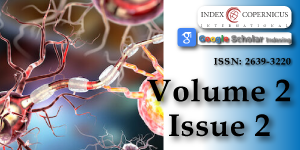Endogenous archeological sciences: Physiology, Neuroscience, Biochemistry, Immunology, Pharmacology, Oncology and Genetics as instrument for a new field of investigation? Modern global aspects for a new discipline
Main Article Content
Abstract
In this work is analyzed scientific literature involved in human evolution to be used as an archeological Pathway to link different sciences in an overall new discipline.
A rational classification of single evidence make possible to better understand under new light some Physiological process.
The archeological instrument to be applied in other field like biology or other sciences.
Article Details
Copyright (c) 2018 Luisetto M, et al.

This work is licensed under a Creative Commons Attribution 4.0 International License.
Luisetto M, Khan FA, Cabianca L, Mokbul MI, Rafa AY, et al. Amygdala pharmacology and crime behavior, dysfunctions to be considered as a disease. Int Arch BioMed Clin Res. 2016; 2: 1-4. Ref.: https://goo.gl/iyg5Jh
Luisetto M, Mashori GR, Nili-Ahmadabadi B, Khan FA, Khan KR. Mindset kinetics and some depression status: A new quantitative model under biochemical - toxicology approach? Insights Depress Anxiety. 2018; 2: 029-039. Ref.: https://goo.gl/TnCkst
Luisetto M. Brain and Transmission Signal Modulation. theranostic brain disorder 2017;
Luisetto M. Jurisdictional Consequences in some brain condition. Neurochem Neuropharm 2017; 3: 2(Suppl). Ref.: https://goo.gl/yu1NXa
Luisetto M, Nili-Ahmadabadi B, Mashori GR, Rafa AY, Sahu RK, et al. Brain and Immune System: KURU, a Strange Kind of Disease. An Endogenous Toxicological Process Like? EC Neurology. 2018; 10: 7. 613-625. Ref.: https://goo.gl/49b9AE
Carey HV, Andrews MT, Martin SL. Mammalian hibernation: cellular and molecular responses to depressed metabolism and low temperature. Physiol Rev. 2003; 83: 1153-1181. Ref.: https://goo.gl/cYm1gV
Davidson I. The archeology of cognitive evolution. Wiley Interdiscip Rev Cogn Sci. 2010; 1: 214-229. Ref.: https://goo.gl/suxux3
Neubauer S, Hublin JJ, Gunz P. The evolution of modern human brain shape. Sci Adv. 2018; 4: eaao5961. Ref.: https://goo.gl/w5NrYR
Bonett RM. Analyzing endocrine system conservation and evolution. Gen Comp Endocrinol. 2016; 234: 3-9. Ref.: https://goo.gl/ufMEuy
Nunn CL, Samson DR, Krystal AD. Shining evolutionary light on human sleep and sleep disorders. Evol Med Public Health. 2016; 2016: 227–243. Ref.: https://goo.gl/dFTeZY
Müller M. Energy metabolism of ancestral eukaryotes: a hypothesis based on the biochemistry of amitochondriate parasitic protists. Biosystems. 1992; 28: 33-40. Ref.: https://goo.gl/AN9U4B
Fondi M, Brilli M, Emiliani G, Paffetti D, Fani R. The primordial metabolism: an ancestral interconnection between leucine, arginine, and lysine biosynthesis. BMC Evol Biol. 2007; 7(Suppl 2): S3. Ref.: https://goo.gl/kv8jTM
Farhud DD, Yeganeh MZ. Brief History of Human Blood Groups. Iran J Public Health. 2013; 42: 1–6. Ref.: https://goo.gl/PNrRzE
de Boer B. Evolution of speech and evolution of language. Psychon Bull Rev. 2017; 24:158-162. Ref.: https://goo.gl/hA6wwU
Heyes C. New thinking: the evolution of human cognition. Philos Trans R Soc Lond B Biol Sci. 2012; 367: 2091–2096. Ref.: https://goo.gl/WGxueV
Thrall PH, Bever JD, Burdon JJ. Evolutionary change in agriculture: the past, present and future. Evol Appl. 2010; 3: 405–408. Ref.: https://goo.gl/SsvTSS
Luca F, Perry GH, Di Rienzo A. Evolutionary Adaptations to Dietary Changes. Annu Rev Nutr. 2010; 30: 291–314. Ref.: https://goo.gl/vY8vM9
Tattersall I. Human evolution and cognition. Theory Biosci. 2010; 129: 193-201. Ref.: https://goo.gl/m7TBEZ
Bar-Rogovsky H, Hugenmatter A, Tawfik DS. The evolutionary origins of detoxifying enzymes: the mammalian serum paraoxonases (PONs) relate to bacterial homoserine lactonases. J Biol Chem. 2013; 288: 23914-23927. Ref.: https://goo.gl/eMTptz
Gehring WJ. The evolution of vision. Wiley Interdiscip Rev Dev Biol. 2014; 3: 1-40. Ref.: https://goo.gl/fuVznB
Ko YA, Susztak K. Epigenomics: The science of no-longer-“junk” DNA. Why study it in chronic kidney disease? Semin Nephrol. 2013; 33: 354-362. Ref.: https://goo.gl/25n2gc
LeDoux JE. Evolution of human emotion: A View through Fear. Prog Brain Res. 2012; 195: 431-442. Ref.: https://goo.gl/wJ5KLW
Corballis MC. Mirror neurons and the evolution of language. Brain Lang. 2010; 112: 25-35. Ref.: https://goo.gl/zLaAFj
Horn CC. Why is the neurobiology of nausea and vomiting so important? Appetite. 2008; 50: 430–434. Ref.: https://goo.gl/uvyfBa
Cloninger CR. Evolution of human brain functions: the functional structure of human consciousness. Aust N Z J Psychiatry. 2009; 43: 994-1006. Ref.: https://goo.gl/CUVQCg
DeFelipe J. The Evolution of the Brain, the Human Nature of Cortical Circuits, and Intellectual Creativity. Front Neuroanat. 2011; 5: 29. Ref.: https://goo.gl/JKksxz
Kaas JH. The Evolution of Brains from Early Mammals to Humans. Wiley Interdiscip Rev Cogn Sci. 2013; 4: 33–45. Ref.: https://goo.gl/MuwQW5
Karten hj. Vertebrate brains and evolutionary connectomics: on the origins of the mammalian ‘neocortex.’ Philos Trans R Soc Lond B Biol Sci. 2015; 370: 20150060. Ref.: https://goo.gl/8xN4Fm
Naumann RK, Ondracek JM, Reiter S, Shein-Idelson M, Tosches MA, et al. The reptilian brain. Curr Biol. 2015; 25: R317–R321. Ref.: https://goo.gl/97ioZ9
Wynn T, Coolidge FL. Archeological insights into hominin cognitive evolution. Evol Anthropol. 2016; 25: 200-213. Ref.: https://goo.gl/Ug9oZw
Averof M, Cohen SM. Evolutionary origin of insect wings from ancestral gills. Nature. 1997; 385: 627-630. Ref.: https://goo.gl/HUoHSy
Pearson BJ, Sánchez Alvarado A. Regeneration, Stem Cells, and the Evolution Tumor Suppression. Cold Spring Harb Symp Quant Biol. 2008; 73: 565-572. Ref.: https://goo.gl/UYXHjP
Nam N, Conrad T, Lewis NE. Metabolic pathway evolution and cellular objectives. Curr Opin Biotechnol. 2011; 22: 595–600. Ref.: https://goo.gl/Eqr3CM
G. BURNSTOCK. Evolution of the autonomic innervation of visceral and cardiovascular systems in vertebrates. Pharmacol Rev. 1969; 21: 247-324. Ref.: https://goo.gl/8p2Kf9
Taylor EW, Leite CA, Sartori MR, Wang T, Abe AS, et al. The phylogeny and ontogeny of autonomic control of the heart and cardiorespiratory interactions in vertebrates. J Exp Biol. 2014; 217: 690-703. Ref.: https://goo.gl/SUsgYv
Vivien CJ, Hudson JE, Porrello ER. Evolution, comparative biology and ontogeny of vertebrate heart regeneration. npj Regenerative Medicine. 2016; 16012. Ref.: https://goo.gl/9NbDZc
Ding K, Kullo IJ. Evolutionary Genetics of Coronary Heart Disease. Circulation. 2009; 119: 459-467. Ref.: https://goo.gl/gBFHZx
Schmaier AA, Stalker TJ, Runge JJ, Lee D, Nagaswami C, et al. Occlusive thrombi arise in mammals but not birds in response to arterial injury: evolutionary insight into human cardiovascular disease. Blood. 2011; 118: 3661-3669. Ref.: https://goo.gl/tyWwzx
Crawford RL, Jensen D, Allen T. Information Resources for Reptiles, Amphibians, Fish, & Used in Biomedical Research. 2001; Information Resources on Amphibians, Fish & Reptiles. AWIC Resource Series No. 10. Ref.: https://goo.gl/VA5fGb





